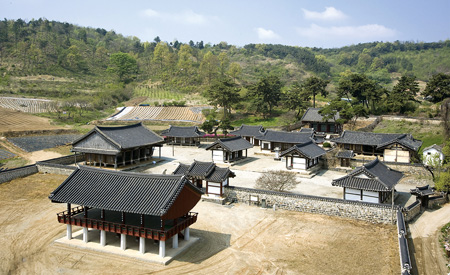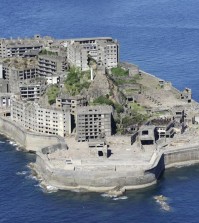- California Assembly OKs highest minimum wage in nation
- S. Korea unveils first graphic cigarette warnings
- US joins with South Korea, Japan in bid to deter North Korea
- LPGA golfer Chun In-gee finally back in action
- S. Korea won’t be top seed in final World Cup qualification round
- US men’s soccer misses 2nd straight Olympics
- US back on track in qualifying with 4-0 win over Guatemala
- High-intensity workout injuries spawn cottage industry
- CDC expands range of Zika mosquitoes into parts of Northeast
- Who knew? ‘The Walking Dead’ is helping families connect
CHA to propose ‘seowon’ for UNESCO heritage

Donam Seowon is located in Nonsan, South Chungcheong Province. The Cultural Heritage Administration (CHA) plans to propose nine “seowon” (Neo-Confucian academy) for inclusion on UNESCO’s World Heritage list for 2015. (Korea Times file)
By Chung Ah-young
The Cultural Heritage Administration (CHA) plans to propose “seowon” (Neo-Confucian academy) for inclusion on UNESCO’s World Heritage list for 2015.
The nine academies proposed are Sosu Seowon (in Yeongju); Namgye Seowon (in Hamyang); Oksan Seowon (in Gyeongju); Dosan Seowon (in Andong); Pilam Seowon (in Jangseong); Dodong Seowon (in Dalseong); Byeongsan Seowon (in Andong); Donam Seowon (in Nonsan); and Museong Seowon (in Jeongeup).
The CHA said that these schools are regarded as the best preserved among some 637 schools still remaining in Korea. Compared to other schools across the country, the nine academies reveal their obvious excellence in terms of outstanding universal value, authenticity and integrity.
“The seowon holds extraordinary, universal value, which is one of the important factors to meet the standards of the UNESCO’s World Heritage registration in that the literati class completed and realized Joseon’s Neo-Confucianism through seowon and its architectural structures are in harmony with natural landscapes,” said the CHA.
The government will submit the registration application to UNESCO by January 2015.
The seowon flourished during the Joseon Kingom (1392-1910) when they served as Confucian educational institutions to nurture scholars and spread the dominant ideology. Also, they were local footholds of the Joseon’s neo-Confucian literati class, to discussions about state affairs.
The first Confucian academy was launched by the Magistrate of Punggi County, Ju Se-bung in 1543, better known as Baegungdong Seowon in Yeongju, North Gyeongsang Province. In 1550, Baegundong Seowon was recognized by King Myeongjong and changed its name into Sosu Seowon, becoming the first seowon endorsed by the king.










![일본 사도광산 [서경덕 교수 제공. 재판매 및 DB 금지]](http://www.koreatimesus.com/wp-content/uploads/2024/07/PYH2024072610800050400_P4-copy-120x134.jpg)


